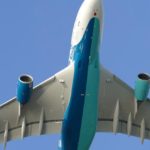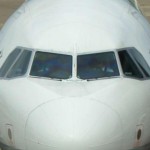
Airbus foresees demand for some 24,300 aircraft in the next 20 years.
According to its latest Global Market Forecast, Airbus foresees a demand for some 24,300 new passenger and freighter aircraft valued at US$ 2.8 trillion between now and 2026. This will create an average annual delivery of some 1,215 aircraft, up from the previously forecast 1,130 average deliveries in the last GMF.
Demand will drive the need for more fuel and eco-efficient airliners to cope with traffic growth and the need to replace older generation less efficient aircraft. By 2026, the fuel burn of the average world fleet is expected to be at three litres per 100 passenger kilometres, or what the A380 already delivers today.
Passenger traffic is expected to grow at an average rate of 4.9 per cent per year, leading to a near threefold increase in the forecast period and will remain resilient to the cyclical effects of the industry. Part of the forecast traffic increase will be absorbed by higher load factors as well as use of bigger more productive equipment and increased frequencies. Even so, the world’s airlines will more than double their passenger aircraft fleets of 100 seats or more, from some 13,300 today to some 28,550 in 2026. This increase together with a forecast replacement of close to 8,150 older aircraft means a total of nearly 23,400 new passenger aircraft worth US$ 2.6 trillion will be needed.
Air freight is forecast to grow even faster, with freight tonne kilometres (FTKs) increasing annually by 5.8 per cent. Combined with fleet renewal, this will create demand for some 3,800 freighter deliveries. Nearly 900 of them, worth US $ 200 billion, will be new factory built.
“Air transportation is definitely a growing industry contributing to economic development and generating wealth around the world,” said Airbus Chief Operating Officer Customers John Leahy. “We are committed to being a key player in making this industry eco-efficient by providing the most technologically advanced products and responding with a full ‘life-cycle approach”.
The greatest demand for passenger aircraft will be from the Asia-Pacific region, which will account for 31 per cent of the total world demand for aircraft. It is followed by North America (27 per cent) and Europe (24 per cent). Emerging markets are also driving traffic demand. Whilst China and India will remain the largest, Airbus forecasts that some 30 additional emerging economies, including Argentina, Brazil, South Africa and Vietnam, with a combined population of almost three billion people, will grow increasingly prominent by 2026.
Airbus forecasts that populations and the number of the world’s mega-cities will continue to grow, which will inevitably lead to an even greater local concentration of demand. This trend will also result in further congestion. One major part of the solution to this growing problem will naturally be the use of larger aircraft from all categories. At the end of 2006, 77 per cent of all long-haul passenger traffic already operated out of the 32 largest existing hubs cities for large point to large point flights.
Growing demand for air transportation, increasingly stringent infrastructure and environmental constraints, competition on price and the need to differentiate through comfort will play a growing role. In this context, Airbus foresees a demand for some 1,700 Very Large Aircraft (VLA) seating more than 400 passengers like the A380. This is valued at US$ 527 billion, and represents 19 per cent of total value of passenger and freighter aircraft deliveries, or seven per cent in aircraft unit terms. Of these, nearly 1,300 will be passenger aircraft or 16 per cent of the passenger market by value, with another 400 or so required for freighters able to transport over 120 tonnes of payload. By 2026, almost two thirds of all VLAs will serve today’s 32 mega hub cities, with Asia-Pacific being the dominant region requiring more than 700 passenger VLAs or 56 per cent of world demand. Twelve of the top 20 large airports for VLA operations will be located in the region.
Demand for twin-aisle aircraft (seating from 250 to 400 passengers) will continue to grow strongly with some 6,000 new passenger and freighter aircraft being delivered in the next two decades. Valued at some US$ 1162 billion, this accounts for about 41 per cent of the total value or 25 per cent in unit terms. Demand in the 250 to 300 seater or small twin-aisle market will total more than 4,000 new aircraft. Another 2,000 larger intermediate twin aisles will be needed in the 350 and 400 seat category. Today, this segment is well served by the A330/A340 family, from the 250 seat A330-200 to the 380 seat A340-600. From 2013, the A350XWB family will cover the entire spectrum of twin aisle market requirements.
More than 16,600 aircraft or 68 per cent of all deliveries in the next 20 years will be single-aisle aircraft. Worth some US$ 1,140 billion, this represents 40 per cent of all aircraft deliveries by value. The demand for these aircraft will be in large part from North America with 32 per cent of the deliveries, followed by Asia-Pacific (26 per cent), Europe (25 per cent) and the rest of the world 17 per cent.
The Airbus Global Market Forecast gives a detailed analysis of world air transport developments, covering nearly 300 distinct passenger and freight traffic flows, as well as a year-by-year fleet evolution of the world’s aircraft operators, through fleet analysis of nearly 700 passenger airlines and 177 freighter operators over the next 20 years. In doing so, the forecast covers aircraft demand from the regional market to the very largest aircraft available, the A380 today.







